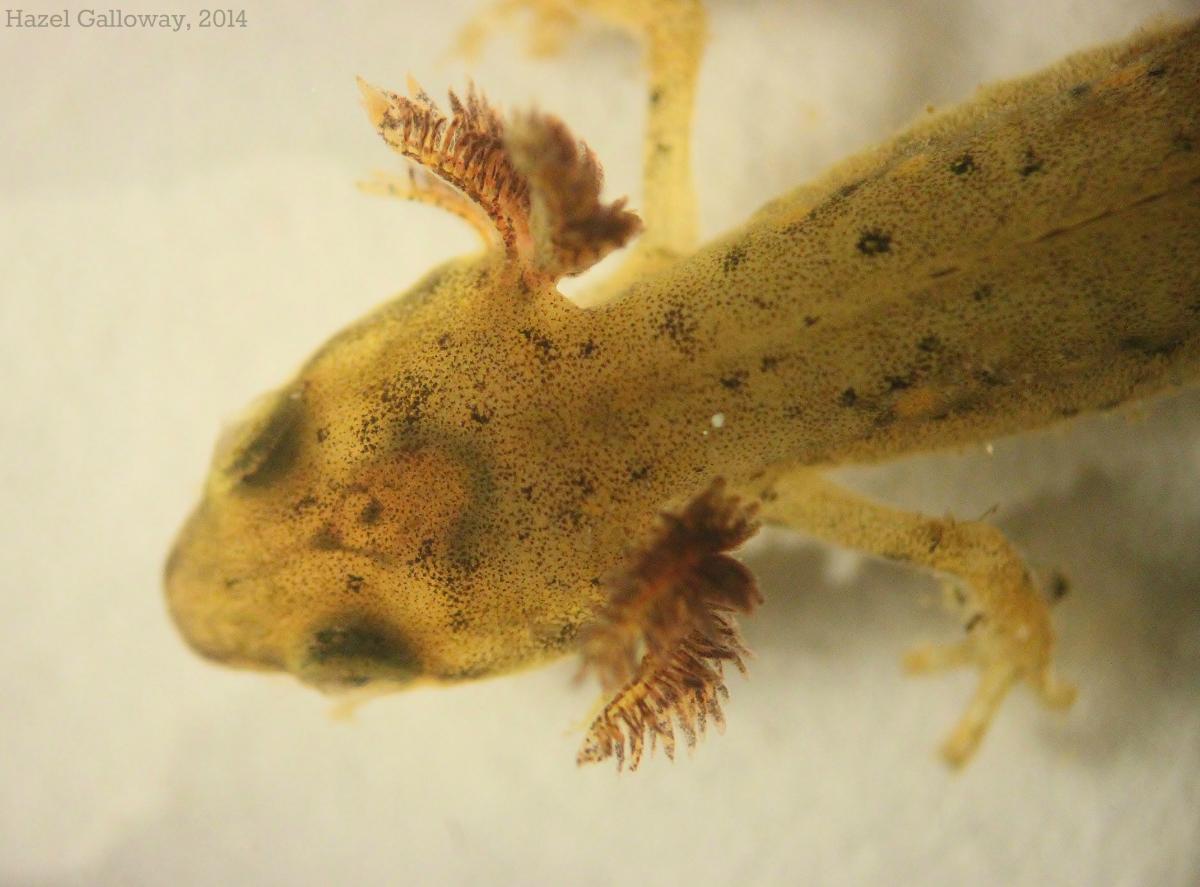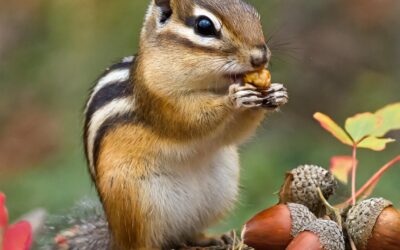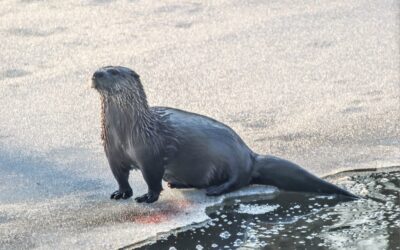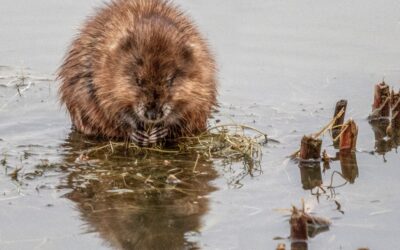Meet our newest guest blogger, Sue Norris. A retired RN originally from the UK, she has lived in the Finger Lakes Region since 1993 and loves the area for its natural beauty, diversity of life and tranquility. Working to be self-sufficient, she grows many of her own veggies, keep a large flock of chickens and heats her home with her own wood, so we can say Sue stays pretty active through the year. Her natural curiosity about animals is a personal education she is eager to share with all, so let’s hop on in to this new series about the smallest critters of the Finger Lakes Region! This month, Sue shares facts and fun about the red spotted newt. Stay connected for more intriguing blog posts coming soon!
This common denizen of the New York wetlands and waterways, the red spotted newt is one of four subspecies of the Eastern Newt. This salamander is a shy and beautiful creature which can live up to 10 years.
 It has four life phases – the egg, larvae, juvenile and adult. Eggs are laid on submerged vegetation in ponds, streams, and wetland areas in clumps of 200-400 eggs. The eggs will hatch, sometime between 3-8 weeks later. The larvae are aquatic and have an olive-colored skin with feathery gills and are between one quarter to one half inch long. They remain as larvae for around 3 months. During this time their diet consists of small aquatic invertebrates.
It has four life phases – the egg, larvae, juvenile and adult. Eggs are laid on submerged vegetation in ponds, streams, and wetland areas in clumps of 200-400 eggs. The eggs will hatch, sometime between 3-8 weeks later. The larvae are aquatic and have an olive-colored skin with feathery gills and are between one quarter to one half inch long. They remain as larvae for around 3 months. During this time their diet consists of small aquatic invertebrates.
FUN FACT: only around 2% of the larvae make it to the next stage.
The next stage of their life is terrestrial – that is they breath air, unlike the larvae. The juvenile salamander (called an eft) has a deep orange, red colored skin with black bordered spots, this is where they get their name from.
The coloration serves as notice to possible predators that the salamander is not edible. I have observed a fish swallowing an eft only to spit it back out a few seconds later!
CAUTION: the eft secretes a poison called a tetrodotoxin, which is poisonous to its would-be predators. It is not harmful to humans, but might cause a slight skin irritation to sensitive individuals, so really should not be handled.
The eft is usually about three inches long and are quite easy to spot. They live among the leaf litter and other debris of the forest floor, searching for bugs to eat. They can often be spotted on roadside verges warming up in the sun. They eat every 2-3 days and are very fond of mosquito larvae, insects, and frog eggs.
The sex of the creature will determine whether they prefer moister or a slightly drier territory, the girls preferring a slightly drier more earthy environment while the boys prefer a more open and watery environment.
During the colder months of the year, the eft will take shelter under debris or rotten logs, or even burrow down into the earth, however they do not necessarily hibernate.
FUN FACT: these little creatures can regenerate limbs that have been lost to injury! They can also regenerate other body parts that have been injured.
The eft stage will last for 2-3 years, then the final adult phase of salamander/newt is entered. The newt will return to the water and become aquatic once more. The coloration becomes more subdued, changing to a drab olive-green body will a dull yellow belly, sometimes retaining the red spots.
The red spotted newt is considered to be one of the indicators of ecosystem health and numbers currently are stable. Although common, the salamander family is threatened by habitat destruction, invasive species, and pollution.
Making wood or leaf piles in your yard may help these little creatures over winter. They will repay you by eating small undesirable insects in your yard.
For more information on these lovely little critters, as well as a list of best places to see them, check out the DEC website.




